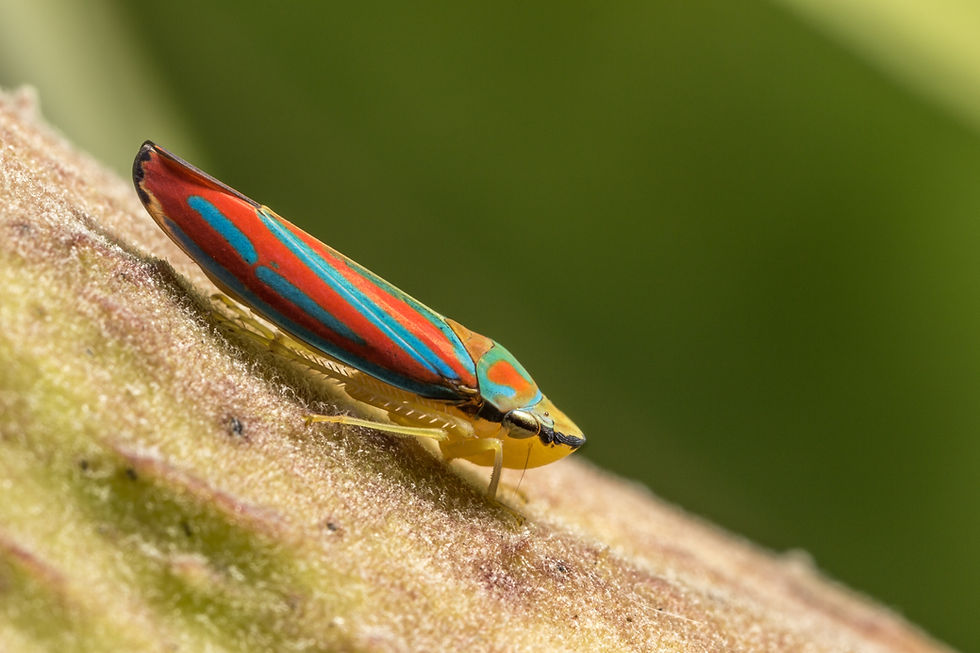From Clothing to Coastlines: Understanding Microplastic Pollution in Marine Ecosystems
- SciCan

- May 31
- 3 min read
Updated: Jun 4
Microplastics are disrupting delicate ecosystems — marine and human.

Microplastics: Here, There, Absolutely Everywhere
As public concern over plastic pollution intensifies, research is revealing how pervasive microplastics have become across ecosystems and inside our bodies.
Canada alone produces roughly 3.3 million tonnes of plastic waste every year, but 2.8 million tonnes of that ends up in landfills. Yes, that means that ~85% of our plastic isn't being recycled.
But wait, there's more: As plastic goods begin to break down on a microscopic level, microplastics start leaching into our ecosystems before the product is even disposed of.
It's no wonder that scrutiny is increasing.
A 2024 paper by researchers Oladimeji Iwalaye and Maria Maldonadoout at the University of British Columbia (UBC), in partnership with the Ocean Wise Conservation Association, examined how polyester microfibers (a common form of microplastics) can impact marine life.
Published in the Science of the Total Environment, the study specifically examined marine amphipods in the Strait of Georgia, BC. Those zooplankton play a critical role in the local ecosystem, and the study findings support mounting evidence that microfibers are harming marine ecosystems worldwide.
Core Findings: Disrupted Animal Systems
Over 50% of the amphipods still had plastic fibers in their bodies after two days.
Higher plastic levels made the amphipods less effective at hunting for their food, copepods.
Waste from amphipods sank faster with more plastic, potentially disrupting the ocean's carbon storage system.
Amphipods ingested plastic fibers up to 357 micrometers long, and ingestion increased when there was more plastic in the water.
Why it Matters: Microplastics Disrupt Biological and Ecological Systems
Microplastics don’t just harm marine life. They also interfere with the ocean’s ability to store carbon. By disrupting the sinking of organic waste, they could contribute to increased carbon in surface waters, potentially worsening environmental disruption.
The implications of microplastic contamination are increasingly clear:
Marine Systems: Studies suggest microplastics disrupt the ability of marine microorganisms to sequester carbon dioxide and produce oxygen.
Freshwater Systems: A study of the Ottawa River found microplastic pollution in all water and sediment samples, indicating widespread contamination.
Human Consumption: Microplastics have been detected in human organs, including the lungs, brains, placentas, and kidneys, which may lead to potential health consequences.
“Studies suggest that microplastics disrupt marine microorganisms’ globally crucial roles of sequestering carbon dioxide and producing oxygen.”
— Stephanie Dutchen, Harvard Medical School
Global Perspectives & Growing Concerns
The findings from the UBC study reflect broader ecological disturbances documented worldwide, from the North Sea to the Great Lakes.
Microplastics — particularly microfibers from textiles — have been found in marine environments worldwide. Those microfibers originate from items like clothing and fishing nets, and typically enter marine environments through wastewater systems.
Microfibers were found in the stomachs of over half the fish species studied in the North Sea.
Recent studies in Thailand revealed that microfibers affected food intake and growth rates in local shrimp species.
Significant microfiber pollution has been found in the Mediterranean Sea, the Great Lakes, the Australian coastlines, and other areas.
Approximately 35% of all microfibers in the ocean come from the laundering of synthetic textiles.
A recent study of Oregon seafood found microplastics in 99% of the samples, with shrimp exhibiting the highest levels of contamination.
Future in Focus: Global Initiatives and Innovations are Bubbling Up
Our reliance on plastic isn't going anywhere anytime soon, with the world generating ~350 million tonnes of plastic waste each year. That's a sobering fact for the health of global ecosystems and our own bodies.
But the expanding body of research thoroughly supports growing efforts to protect ecosystems by reducing microplastic pollution: from textile manufacturing innovations that reduce fibre shedding to washing machine filters that catch microfibers.
Beyond technological fixes, policies restricting microfiber pollution — like improved wastewater filtration and textile regulations — are also some impressive emerging solutions.
With continued funding for research and innovation, the sustainable textile and materials movements may soon be able to turn the tide on microplastics.
🍁 Subscribe to weekly updates from Science Canada→

















Comments